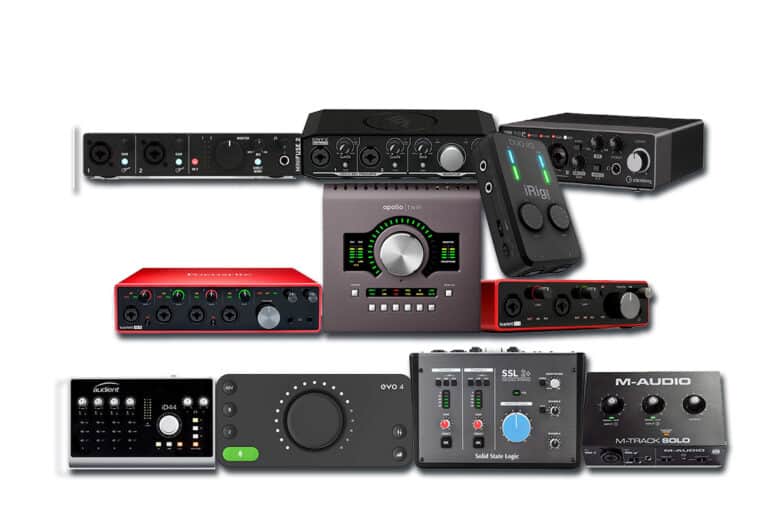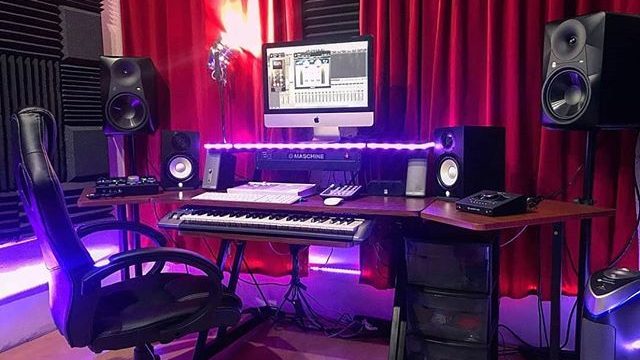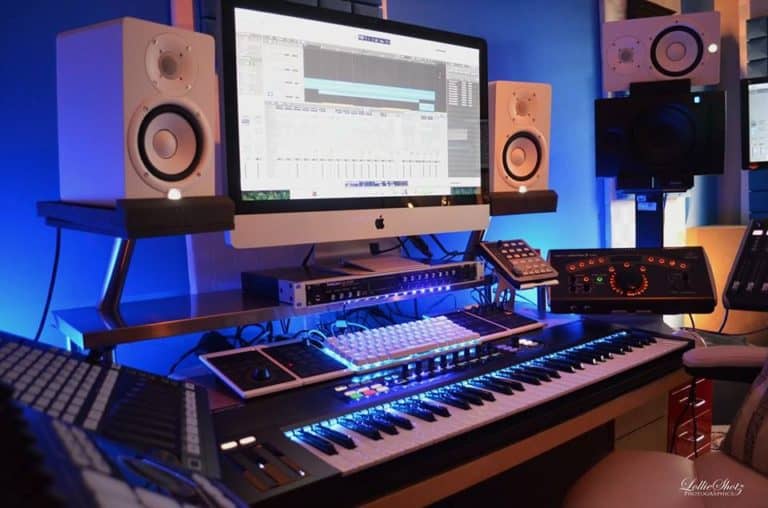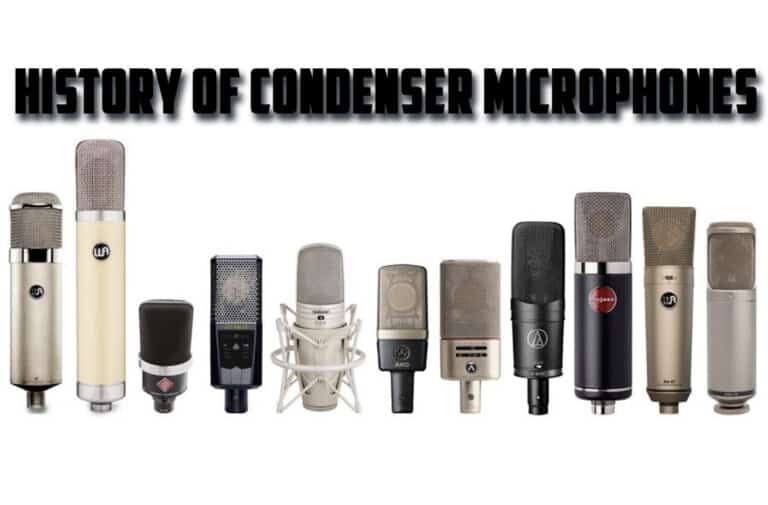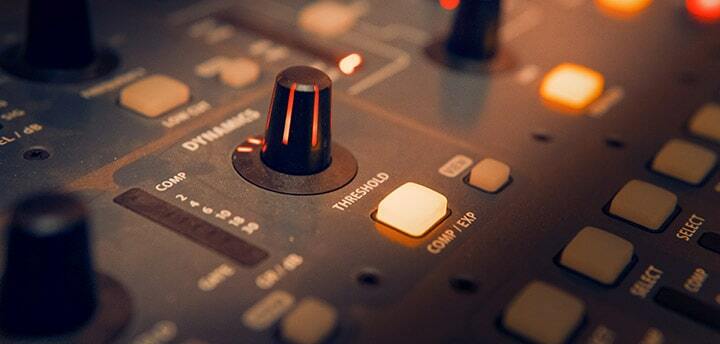What Is A Preamp and How Does it Make Magic?
This blog article started from the simple question; what is a preamp and why is it different than a power amp? If you’re an audiophile, you likely know that preamps and power amps are both integral electronic components in audio systems. But what’s the difference between them?
Preamp

Preamps (or “preamplifiers”) increase sound signals before they reach the amplifier stage, while power amps (or “power amplifiers”) boost those same sounds so they can be heard at optimum volume levels.
In other words, a preamp prepares your musical signal for amplification by enhancing it with additional effects or equalization. In contrast, a power amplifier takes your mastered music and boosts its loudness level tenfold!
Amplify and upgrade the sound of your microphone, instrument, or any other audio device with a preamp.
This incredible tool provides powerful amplification that brings out clean tones with minimal distortion and has features such as equalization to shape the style of your audio signal and control volume levels.
Preamps are essential in recording studios for high-quality sound production and are often used in live setups to deliver an amplified yet transparent sound experience.
Power Amps

Unlike preamps, power amps are designed to amplify the signal and make it robust enough for speaker systems or other output devices.
Power amplifiers take the preamp’s work further by boosting it to even greater heights – all within an audio system’s final stage before sending its signal to speakers.
Because of how integral they are in sound quality and volume, power amplifiers play a crucial role in your overall music experience!
To put it simply, a preamp is necessary to boost the low-level signal and make it suitable for processing by other components in your sound system.
At the same time, a power amplifier takes this amplified signal and amplifies it further so that loudspeakers or any other output device can be powered.
What is a preamp?

What is a preamp? Well, a preamp or preamplifier will boost the sound of your audio sources. This electronic device takes low-level input signals from mics, instruments, and other sources and amplifies them to levels suitable for further manipulation in any audio system.
Preamps are an essential element in any signal chain. They act as the first amplification step that boosts weak signals from microphones and other instruments before they move on to further processing, such as mixing, equalization, or effects.
Without preamps, your sound system could be deprived of its maximum potential – so make sure you have one to ensure a perfect performance every time!
Not only can preamps amplify sound, but they also provide other essential functions, such as equalization and volume control.
Additional features like high-pass and low-pass filters may be included to refine your tone further.
While some are crafted for transparency by providing a crisp signal amplification, others offer more creative options that color the source in particular ways – adding character or warmth to ensure you find your desired result.
Preamps are essential for optimizing your audio experience, whether in a recording studio, home theater system, or live sound reinforcement.
What is a power amp?
A power amplifier (or simply ‘amp’) is a device that intensifies audio signals, so they are heard through speakers or other output sources.
By amplifying sound, the amp creates an energized listening experience for any audience.
A power amplifier boosts the line-level signal from a separate preamp to amplify it to an output signal capable of driving speakers, headphones, or other sound systems.
Located at the finale stage in the signal chain before being sent out for transmission, these devices are indispensable for superior sound quality and volume control.
When selecting an amplifier for your sound system, its power rating is a crucial factor to consider.
A power amp’s primary purpose is to produce enough power and clarity to accurately replicate the signal through speakers or other output devices.

Therefore, the amount of output produced by these amplifiers is generally gauged in watts.
Power amplifiers can have either a solid-state or tube design. Each confers distinctive sonic attributes.
Your ears will pick up on crisp clarity with the former and a warm tonal character from the latter, not to mention adequate levels of harmonic distortion.
Make your decision based on what type of sound you’re looking for!
Power amplifiers are applied in various scenarios, from theatrical performances to movie theaters and world-class recording studios.
What makes a preamp and a power amp different?
Preamps and power amps may seem similar, but they differ in their function within an audio system and at which stage of the signal chain each operates.
A preamp amplifies low-level signals from source devices like microphones and instruments as the first component in an audio signal chain.
Not only will it amplify your sound, but it can also add features such as equalization, tone shaping, and volume control.
By boosting up your signal before sending it to other components like mixers, equalizers, or even effects processors, you’ll be sure to get the most out of every note played!
Conversely, power amplifiers are tasked with amplifying signals to a level that can propel output devices such as loudspeakers.
They take the pre-amplified signal and strengthen it so that sound can be successfully projected from speakers or other components.
Usually situated at the end of an audio chain before being sent to outputs, power amplifiers finish your listening experience by delivering optimally amplified sounds!
One of the key distinctions between preamps and power amps is volume. While preamps typically magnify sound levels by as much as 30 dB, power amplifiers can multiply it to an even greater level – from hundreds to thousands more watts!
With this remarkable strength, a clear and crisp output audio quality is guaranteed with every use.
Preamps and power amplifiers have unique circuitry designs. For example, preamps may contain vacuum tubes or solid-state elements.
At the same time, the output stage of a power amp could be either Class A, Class AB, or Class D.
The design of these components affects their overall performance in audio equipment production and should be noticed!
When it comes to their purpose, the primary divergence between a preamp and a power amp is clear.
A preamp takes weak audio signals from source components or instruments and amplifies them so other parts of an audio system can further process them.
Do I need both a preamp and a power amplifier?
Depending on your setup and the equipment you are using, a home recording studio may require both a preamp and a power amp for optimal sound quality.
A preamp is undoubtedly indispensable for recording audio, as it enhances the power of microphone and instrument signals to a level that can be captured and handled by other components in an audio system.
For example, suppose you’re looking to record vocals or instruments with microphones. In that case, you’ll undoubtedly need a preamp that amplifies the signal strength and provides precise amplification with minimal background noise.
If you’re utilizing powered speakers or headphones, you don’t have to invest in a power amp when recording at home.
This is because the latter already comes with an integrated amplifier so that it can be plugged into your audio interface for monitoring directly without needing another external source of amplification.
As such, you won’t need any additional amplifiers to get started on your next project!
A power amp is essential if you want to connect passive speakers to your recording system.
This will provide the energy needed for the speakers to generate the optimal volume and sound quality you are striving for.
Incorporating a preamp into your home recording studio is necessary to amplify the microphone or instrument signal before other components of its system are used.
A power amp may only be mandatory when connecting passive speakers to your setup. No need for one if you’re using powered headphones or speakers, though!
Instrument Amplifiers
From the instrument input, through the preamp section of your amplifier is where signal amplification begins.
Here, sound levels are increased to a magnitude that can comfortably be processed by other components in the amp, like tone settings and power amp stages.
To further customize output sounds, additional elements such as bass, mid-range, and treble knobs or distortion/reverb effects may also be included in this preamplifier stage – bringing forth fantastic sonic options from one single source!
The power amp section of an instrument amplifier has the critical responsibility to take the preamp’s signal and amplify it to a level that is powerful enough to drive speakers.
Most often situated after both tone controls and effects within the signal chain, this essential component provides one last stage of amplification before sending sound signals through loudspeakers.
An instrument amplifier comprises two crucial sections: the preamp and the power amp.
The former can drastically shape the sound’s overall tone, while the latter influences how loud it gets when excited and its audio quality at higher decibels.
Consumer Audio equipment
Certainly, preamps and power amplifiers are also included in consumer audio equipment such as home sound systems, stereo amplifiers, and A/V receivers.
In consumer audio gear, the preamp is fundamental for enhancing and amplifying sound from multiple sources, such as CD players, turntables, digital music devices, etc. It also adjusts tone and balance settings, offering versatile features like input selection and volume control.
However, as its primary purpose is to provide an input into your amplifier before it’s amplified any further – preamps are often located at the interface between source equipment & their corresponding amplifier.
The power amp is the last essential step before your signal reaches its destination: the speakers.
This part of consumer audio equipment amplifies the sound to a level that can cause them to resonate, ultimately determining how loud it will be and what quality you’ll experience at maximum volumes.
With powerful amplification capabilities, the power amp provides an unbeatable listening experience for any music enthusiast!
Some consumer audio devices are equipped with an integrated amplifier that combines the preamp and power amp into a single unit.
This means that both of these processes, signal processing and amplification, can be done within one device.
Preamplifiers and power amplifiers are essential components of consumer audio devices such as stereo systems, home theater receivers, and speaker amplifiers. The primary role of the preamplifier is to boost signals from different sources while adding or processing them.
Tags: what does a preamp do for home audio, do i need a preamp and an amp, how to use a preamp with an amp, preamp for speakers, preamp vs audio interface, what is a preamp
Related Articles
A link to a website’s take on the best mic preamps
5 More Excellent Essentials and How To Make Music at Home!
9 Best Budget Audio Interfaces For Excellent Recording Results!
9 Best Digital Pianos for Beginners Who Love Muisc
9 Best Microphones For Recording Acoustic Guitar That Sound Amazing!
9 Best Vocal Microphones To Make Your Vocals Sound Amazing!
9 Best Studio Headphones: Amazing Music To Your Ears
9 Best Condenser Mics That Will Blow Your Mind, but not Your Budget!
The Ultimate Guide to the Best Vocal Mics: Condenser Edition


